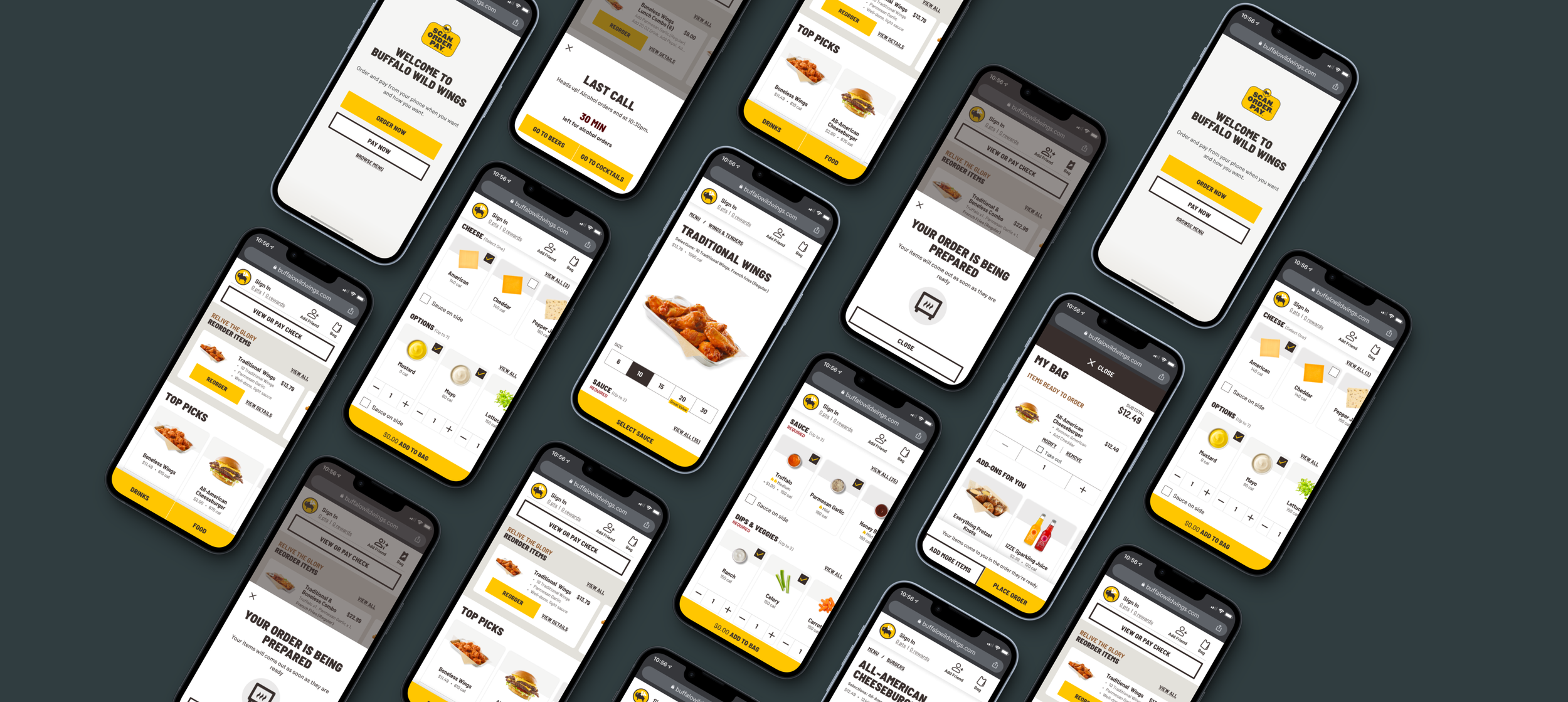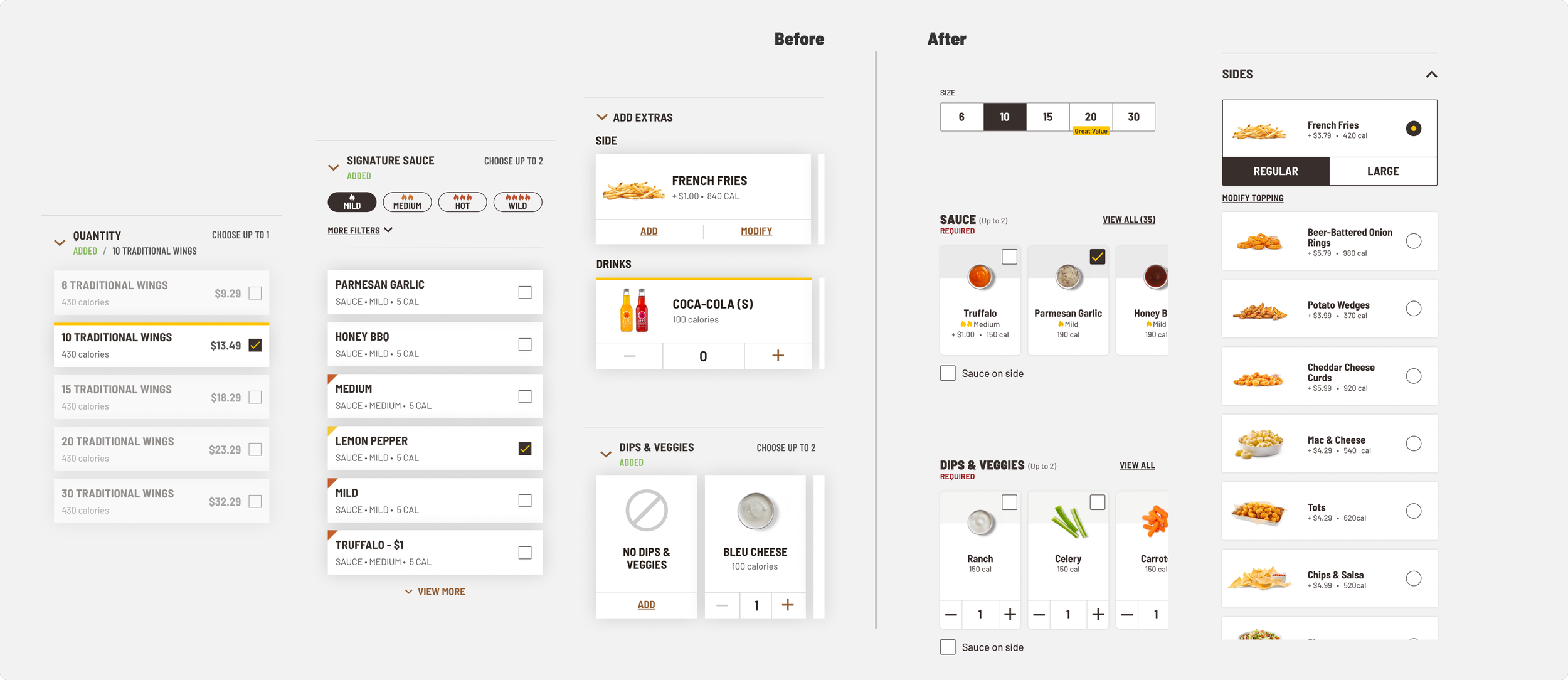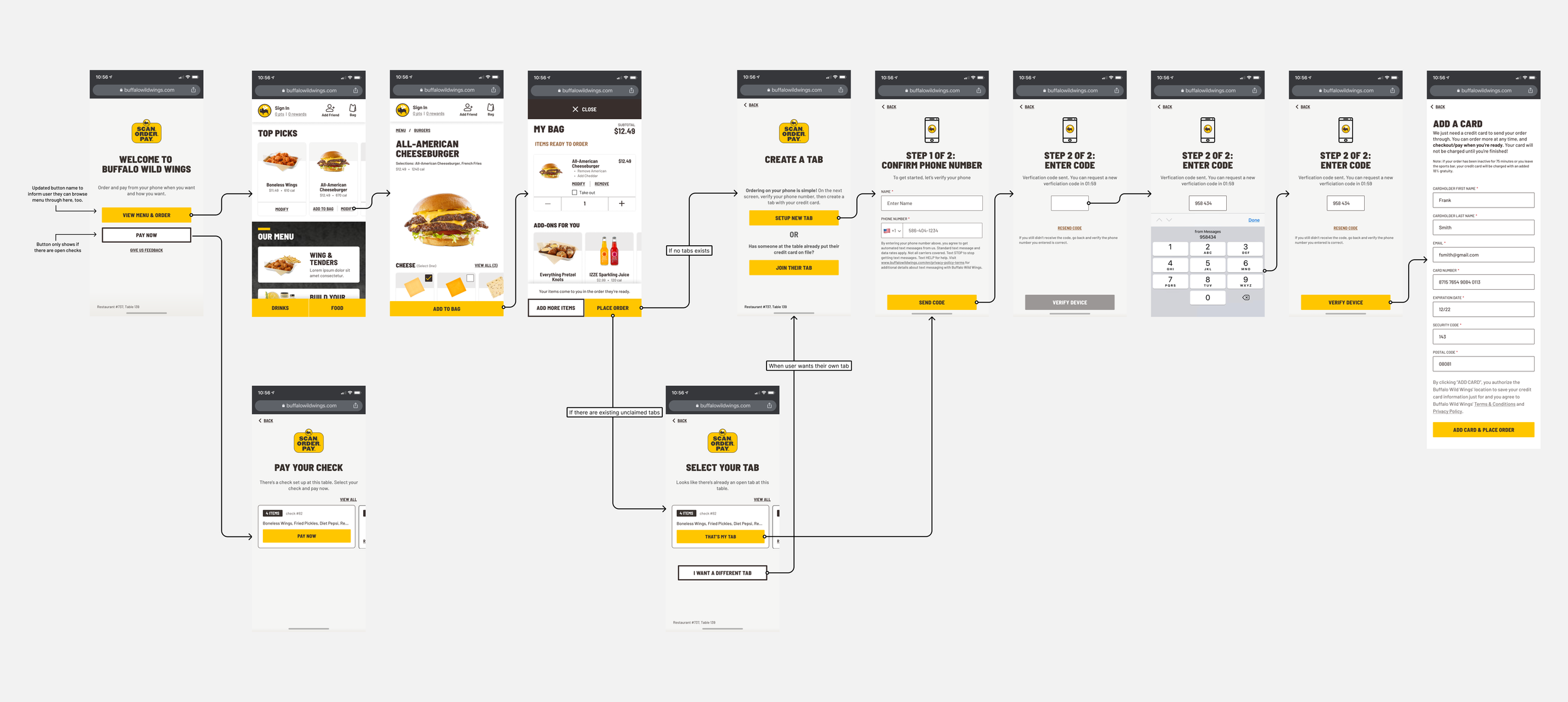BWW Choice
In-restaurant dining experiences have evolved significantly over the past few years. With COVID accelerating these changes, Buffalo Wild Wings pivoted to embrace the new dining norm. Within three months, we launched a web-based product that enables customers to use their own devices to browse the menu, order food and drinks for dine-in, and checkout at their convenience without waiting for a server. What makes this experience unique is its hybrid approach to server involvement. The customer can order and pay independently, order part of their meal through a server, or enjoy a traditional full-service experience.
My Role
Design Lead
Product Designer
Key Contributions
Defined the end-to-end digital experience
Created the UX workflow timelines
Worked closely with the Product Manger to refine requirements
Led review sessions with stakeholders including the president of BWW
Identified critical outlier scenarios
Created high fidelity designs
Updated the design system
Client/Project
Buffalo Wild Wings
The Process
Luckily, before I joined the team, a proof-of-concept (POC) had been built and tested for a few months. I worked closely with the product team to identify its strengths as well as areas for improvement. For example, we identified unique scenarios involving multiple guests on a single check that required new screen flows. Following the POC launch, a brand refresh occurred, requiring updates to all screens to align with the brand’s new look and feel.
Unique Bag For A Hybrid Experience
Given that guests can order food and drinks continuously during their visit, a simple bag screen followed by a checkout screen would be confusing. We needed a dedicated page for guests to view their previous orders and place new orders while also preventing users from accidentally closing their check. Based on research and learnings from the POC, I decided to completely separate the checkout screen from the normal screen flow. I designed a new bag page that displayed ordered items and items ready to be sent to the kitchen. The checkout page was then made accessible only from the homepage.
Engaging The Stakeholders
“Being a part of the Blazin Rewards program is not a business requirement to use Choice”
“How much of the non-digital experience do we bring to life digitally?”
“[Sending Order to Kitchen]...This dynamic differentiates this experience from nearly every other experience we’re used to online”
Engaging with stakeholders of various levels provided valuable insights throughout the design process. Keeping the BWW president and chief brand officer closely in the loop helped me understand how they saw the product from a business perspective. For instance, when we discussed adding a loyalty sign-up link, they clarified that the primary focus was enhancing the dine-in experience rather than converting new loyalty members. This kind of dialogue shaped our design decisions.
Continued Iteration
he first few months after the launch were crucial for gathering feedback from both guests and restaurant servers. With the gathered data, we were able to launch fast-follow releases that addressed issues and introduced new features to improve the experience.
In the example below, you’ll see a new onboarding flow that allows the customer to view the menu before entering any payment information.





